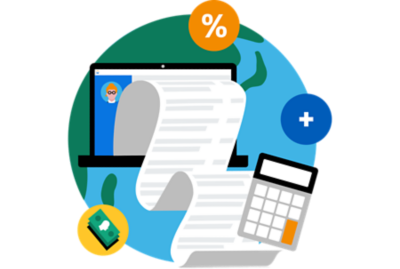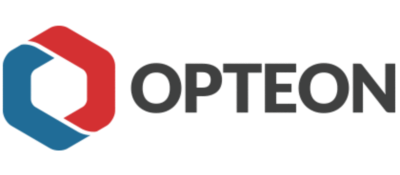MULTI-CURRENCY ACCOUNTING
Multi-currency accounting: here’s what to know.
Running a global organization means managing various currencies around the clock. Multi-currency accounting makes it easier to manage that complexity. Because there needn’t be a tradeoff between accuracy and agility.

Learn about multi-currency accounting.
For global businesses to succeed in our modern era of pervasive uncertainty and breakneck change, they need accounting practices that harness the full power of technology. Learn how multi-currency accounting does just that.
Defining Multi-Currency Accounting
What is multi-currency accounting?
Accurate financial information is the lifeblood of any organization. But for organizations that operate in multiple countries, that accuracy can be harder to achieve and maintain. Managing multiple currencies means greater complexity, from satisfying local reporting requirements to hedging against currency-exchange volatility. It also makes it more challenging for companies to consolidate and report on their financial data, and to present a single, unified view of performance.
Multi-currency accounting enables a company’s accounting to operate from a base currency to manage and analyze financial data through translations for reporting. Imagine, for instance, a company headquartered in the U.S. that operates manufacturing facilities in Vietnam and Mexico. With multi-currency accounting, when the Mexican manufacturing division makes a payment to a vendor, the approved transaction is recorded in pesos (the local currency) and also converted automatically to the company currency of U.S. dollars.
With both currencies in place for the lifecycle of the transaction, financial management becomes far simpler, faster, and more precise. At the local level, accounting teams are able to close the books and meet local reporting and compliance requirements. And at the corporate level, accounting teams have real-time, expansive visibility and the ability to drill down into the data, all the way to the transaction detail. That’s a far cry from outdated ways of working, when local offices would report financials to the parent entity for conversion only at the summary level—leaving companies vulnerable to errors, delays, and reporting risks.
75%
Of accounting professionals say accounting processes are still largely manual or a considerable manual effort at their organization
36%
Are planning to or currently implementing cloud-based accounting solutions
“From Mirage to Reality: Bringing Finance Into Focus in a Digital World,” Deloitte, 2023
The Need for Multi-Currency Accounting
Why do companies need multi-currency accounting?
With globalization in full force and world markets more integrated than ever, companies looking to stay competitive must compete on a global level. But operating across many local currencies kicks up a number of risks and financial concerns.
Currency volatility. Any uncertainty—whether tied to geopolitical conflicts, economic headwinds, or political turmoil—can cause volatility in foreign exchange, which leads to transaction and economic exposure. Managing such exposures is often out of reach for companies juggling duplicative ledgers and manual translation.
Increased accounting burden. Manually checking currency exchange rates and aggregating siloed data in order to convert foreign currency transactions into the company currency is a time-intensive slog. But replacing the old ways of working with intelligent automation and cloud-based accounting software can make financial consolidation and reporting faster, smoother, and far more efficient.
Local regulations and compliance. Every country has its own financial rules and requirements, in addition to whether it adheres to the International Financial Reporting Standards (IFRS), Generally Accepted Accounting Principles (GAAP), or local GAAP. Multi-currency accounting enables accounting teams to nimbly manage multiple currencies while adhering to the local accounting standards and satisfying local reporting requirements, in each country the company operates in.
Performance clarity. Currency exchange rates can sometimes make it harder to compare how different entities or divisions are performing. But with multi-currency accounting, finance teams can easily parse the impact of foreign exchange to provide a clearer picture of business performance to power more-informed business decisions.

“Manual consolidation with a significant time zone difference means it takes around five days longer than it should to close our month-end books. Workday will help us solve that.”
—Chief Financial Officer, Opteon Property Group
Key Multi-Currency Accounting Terms
What are the key terms in multi-currency accounting?
Company currency: Also known as functional currency, this is the currency of the primary environment in which the entity generates and expends cash. Determining the functional currency tends to be incredibly straightforward, but there are circumstances that require more consideration. Under Accounting Standards Committee (ASC) 830 in the U.S., for instance, a currency in a highly inflationary environment is not considered stable enough to serve as a functional currency.
Foreign currency: This refers to any currency other than the company currency.
- Transaction currency: Also known as ledger currency, this is simply the currency of a submitted transaction. It can be the same or different from the functional (company) currency.
- Reporting currency: Global companies are required to report at the local level, with the local entity typically taking the lead on such reports. The reporting currency—meaning the currency in which the financial statements are prepared—is often the currency of the country where the local entity is located. But it doesn’t have to be. For example, a New Zealand company that is registered in Australia and has significant investors in the United States might prepare financial statements using the New Zealand dollar, the Australian dollar (to satisfy requirements by the Australian Securities & Investments Commission), and the U.S. dollar (for investors).
Translation: This is the process of converting transaction details and financial reports from functional currency to the reporting currency. While some companies tackle this through manual calculations, accounting software can automate translation.
- Exchange rate: The rate at which one currency will be exchanged for another currency at a particular point in time. When multi-currency accounting is powered by intelligent automation, each translation is automatically translated into the company currency based on the exchange rate in effect on the date of transaction.
Managing Multi-Currency Accounting
How do accountants manage multi-currency accounting?
Gone are the days when cross-border organizations manage multi-currency accounting by tasking local finance teams with reporting summary-level financial data to the main headquarters. Today, accounting software that leverages artificial intelligence (AI) and machine learning (ML) can intelligently automate the often-complex process of managing multi-currency accounting. Here’s how it works:
The finance team uses accounting software to establish the company currency. This ensures a single currency for accounting and is fixed. Translation rules that define the conversion rates are also set.
When an operational transaction occurs, embedded ML automatically populates the applicable currency. Suppliers and customers are set to default currencies, for instance, while for expense reports the platform would use the company currency of the employee or the payment election currency of the employee (if the currencies differ). The transaction currency will remain in place throughout the lifecycle of the transaction.
Upon transaction approval, intelligent automation generates operational journals and accounting journals. If the transaction currency is different from the company currency, automated configurable rules convert the transaction into the company currency. Auditability is built right in, because all information and activity—from initial transaction and local currency to all currency exchanges and rates and dates used—is retained right in the recorded transaction.
Accounting teams can carry out reporting in multiple currencies, with a few simple clicks. The translation rules set earlier to define the conversion rates are subsequently used to translate the company currency into a reporting currency.
For consolidation, all group company results get translated into the reporting currency in real time. Transactions in foreign currencies get recorded in the company currency at the spot rate on the day of the transaction. Financial assets and liabilities originally recorded at the spot rate get revalued to the balance sheet rate.

“We rely on Workday as both our ERP and accounting repository. Knowing that the data is complete, accurate, and timely is vital to do my job efficiently and effectively while easily delivering reports our executives need for good decision-making.”
—Controller, ABC Fitness
Multi-Currency Accounting Best Practices
What are multi-currency accounting best practices?
Financial regulations may change, your organization’s global footprint or operations may evolve, but these best practices are here to stay.
Unify the enterprise on a single solution. Disparate applications means more friction, frustration, and interoperability issues that could lead to working with inaccurate or out-of-date data. To ensure consistency across the global accounting function, opt for one solution that supports multi-currency accounting and reporting.
Configure the system’s accounting rules. You should be able to easily modify an accounting system’s rules and workflows so that they’re tailored to your organization—not have to contort your team to fit a one-size-fits-some solution. Dramatically simplify and streamline multi-currency accounting by opting for accounting software that enables your accounting team to easily maintain and modify the rules as needed.
Embrace automation. AI and ML are reshaping the finance function, and accounting is no different. By letting intelligent automation manage routine but dynamic tasks, your finance team can devote more time to high-impact activities and accelerate the close.
Preserve data lineage. For transparency and compliance, an audit trail is absolutely essential. But an accounting software that preserves both the company currency and transaction currency for a transaction’s entire lifecycle can also help deliver richer insights, greater efficiency, and more complete peace of mind.